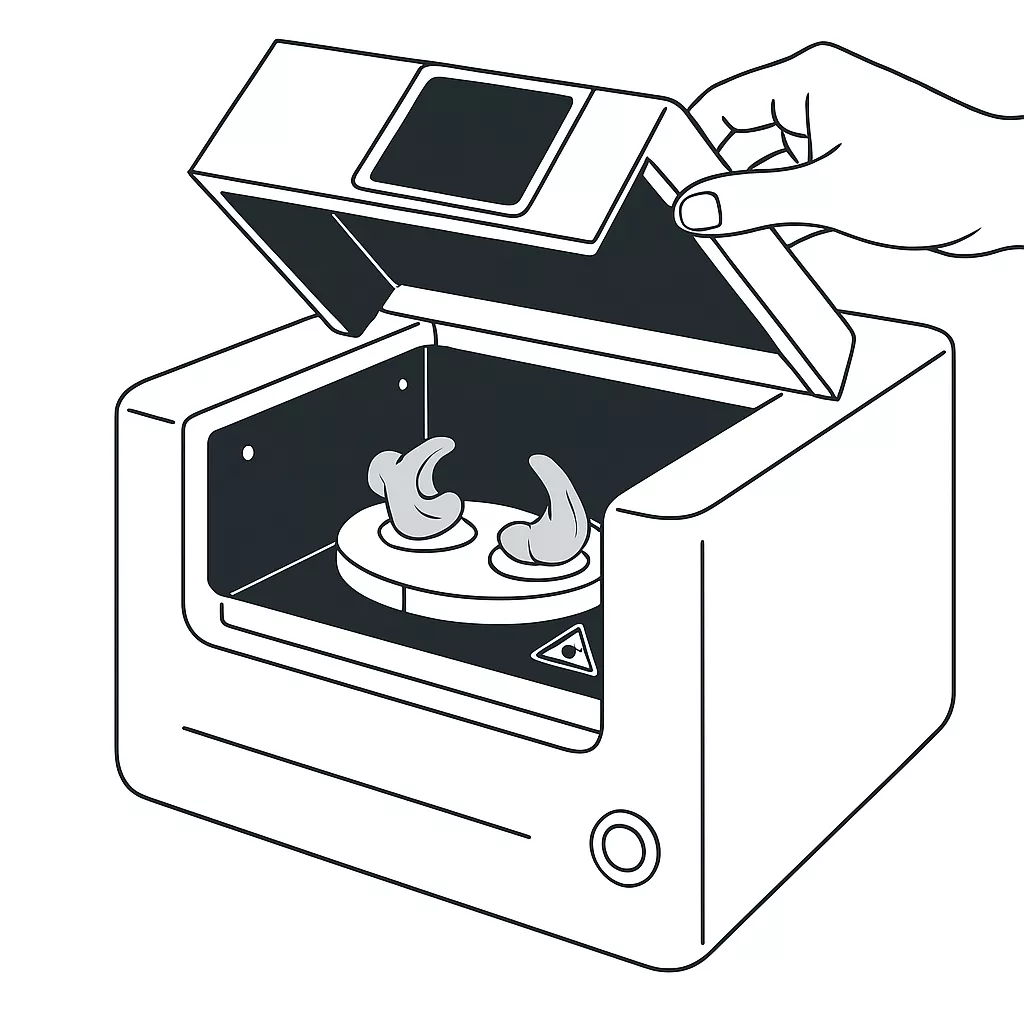Good hearing protection should not only be damping, but also comfortable. Especially when it comes to daily use, fit is just as important as the protection itself. That's why many companies and employees opt for customized hearing protection. It is fully tailored to the wearer's ear.
But how does such a custom-made protector actually come about? The process consists of several steps, from making an ear print to production in the lab. Below, we explain it step by step.


It all starts with an accurate impression of the ear canal. This is done by an otometrist or hearing care professional. First, a small cotton ball is placed in the ear so that the paste does not get too deep. After that, a soft silicone paste is injected into the ear.
The paste fills the ear canal completely and hardens within a few minutes. The result is an exact print of the inner ear. This process is completely painless and usually takes no more than ten minutes. The print forms the basis for the further production process.

After taking the print, it is scanned with a 3D scanner. This creates a digital model of the ear, which is continued to be worked on in the lab.
The digital file is checked for quality. If any imperfections or deviations are visible, they are digitally adjusted. This ensures that the end product will soon fit tightly, without pressure points or leaks.

With the digital model, the hearing protector is printed with a special 3D printer. It works with medical silicone material that is suitable for long-term skin contact.
The printer builds the product layer by layer. This creates an exact copy of the ear canal. This makes the fit much more accurate than standard earplugs or universal models.

When the printing process is complete, the edges of the product are manually smoothed. This prevents sharp edges or irritation when worn. This is followed by extensive quality control. The fit, strength and finish are checked.
In many cases, it is also tested whether the hearing protector closes properly and does not let sound through in places where this is not intended. Only if everything is correct does the product move on to the last step.
An acoustic filter is usually installed when it comes to hearing protectors for the workplace. This small filter does let in certain noise levels, such as speech or signals, while blocking harmful peaks.
There are different types of filters depending on the type of work and the desired attenuation level. This way, communication remains possible without sacrificing safety.
Once everything has been checked and the filter has been installed, the hearing protection is ready for use. The otoplasty is packaged and delivered to the wearer. In some cases, a fit check will still be done on location.

The user also receives an explanation of the correct use, maintenance and the importance of periodic inspection. A good fit today does not automatically mean that protection will be optimal in a year's time. Regular monitoring therefore remains important.